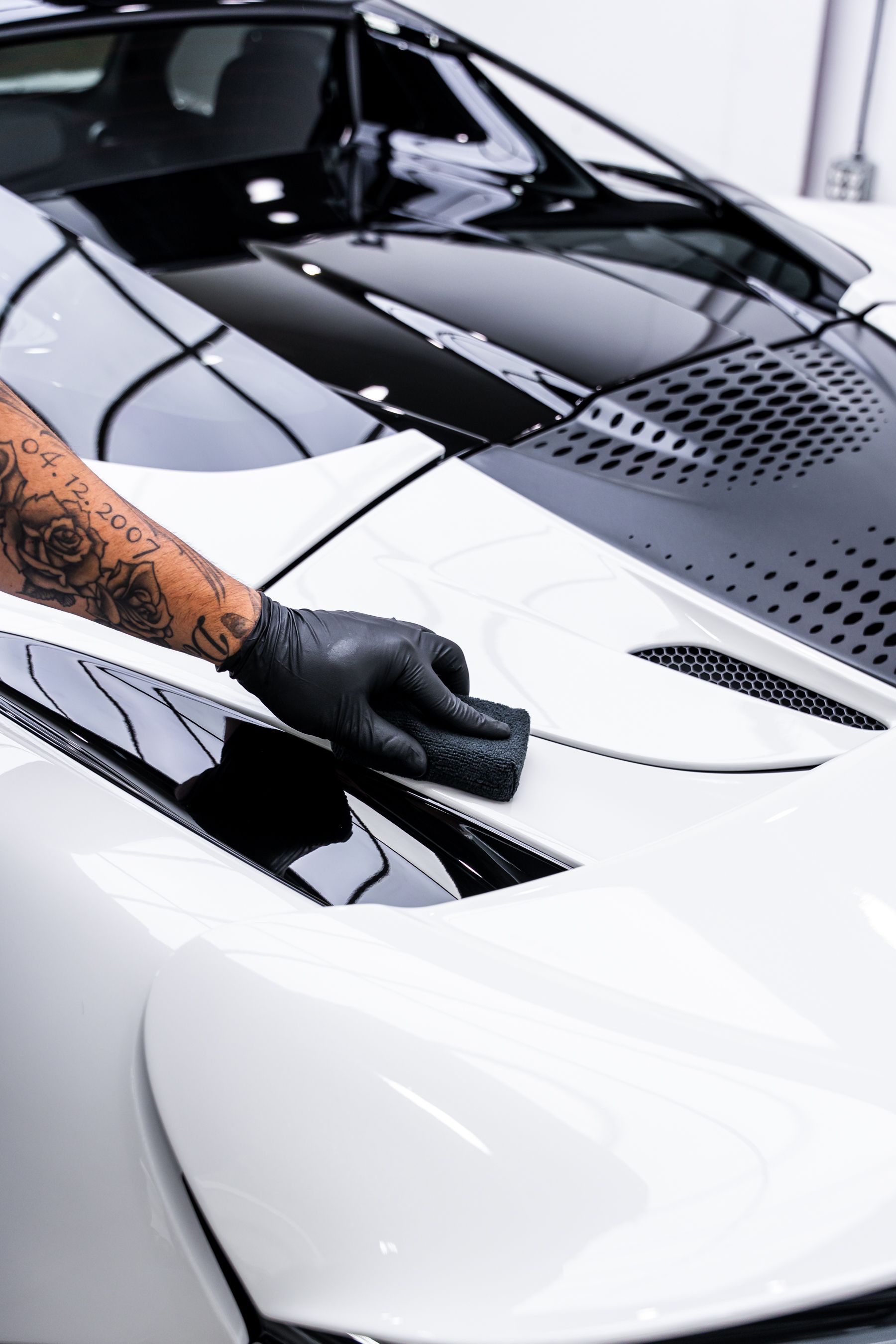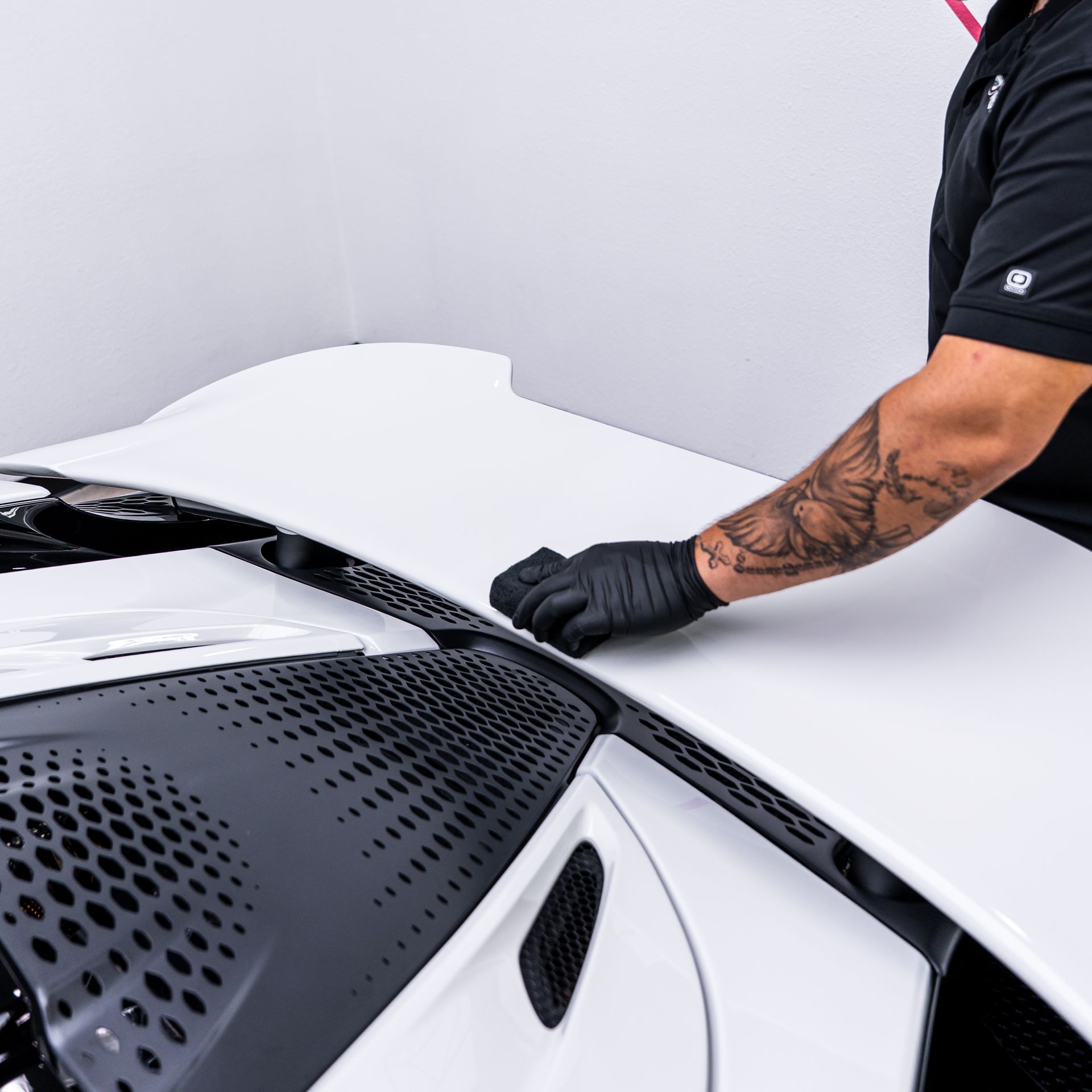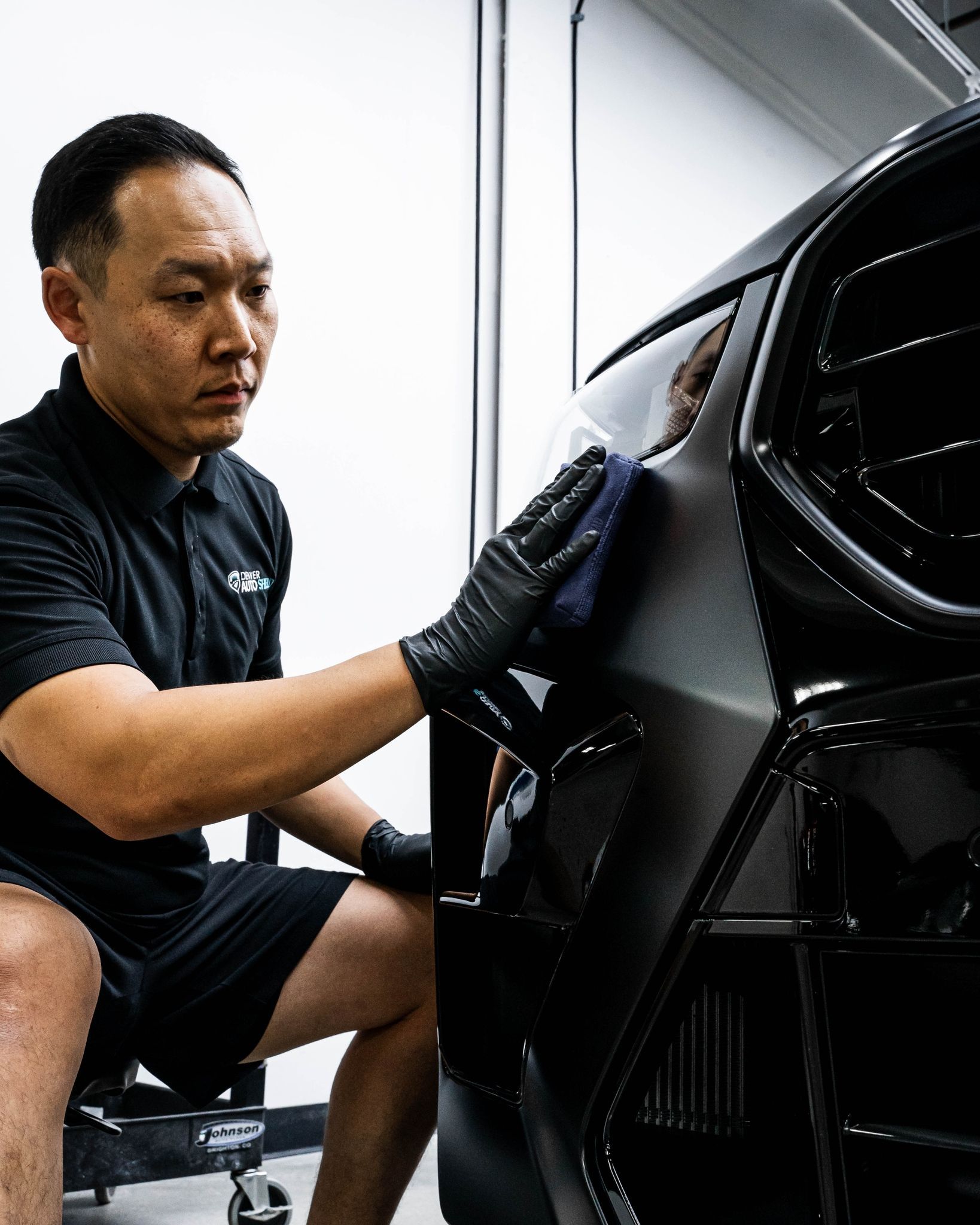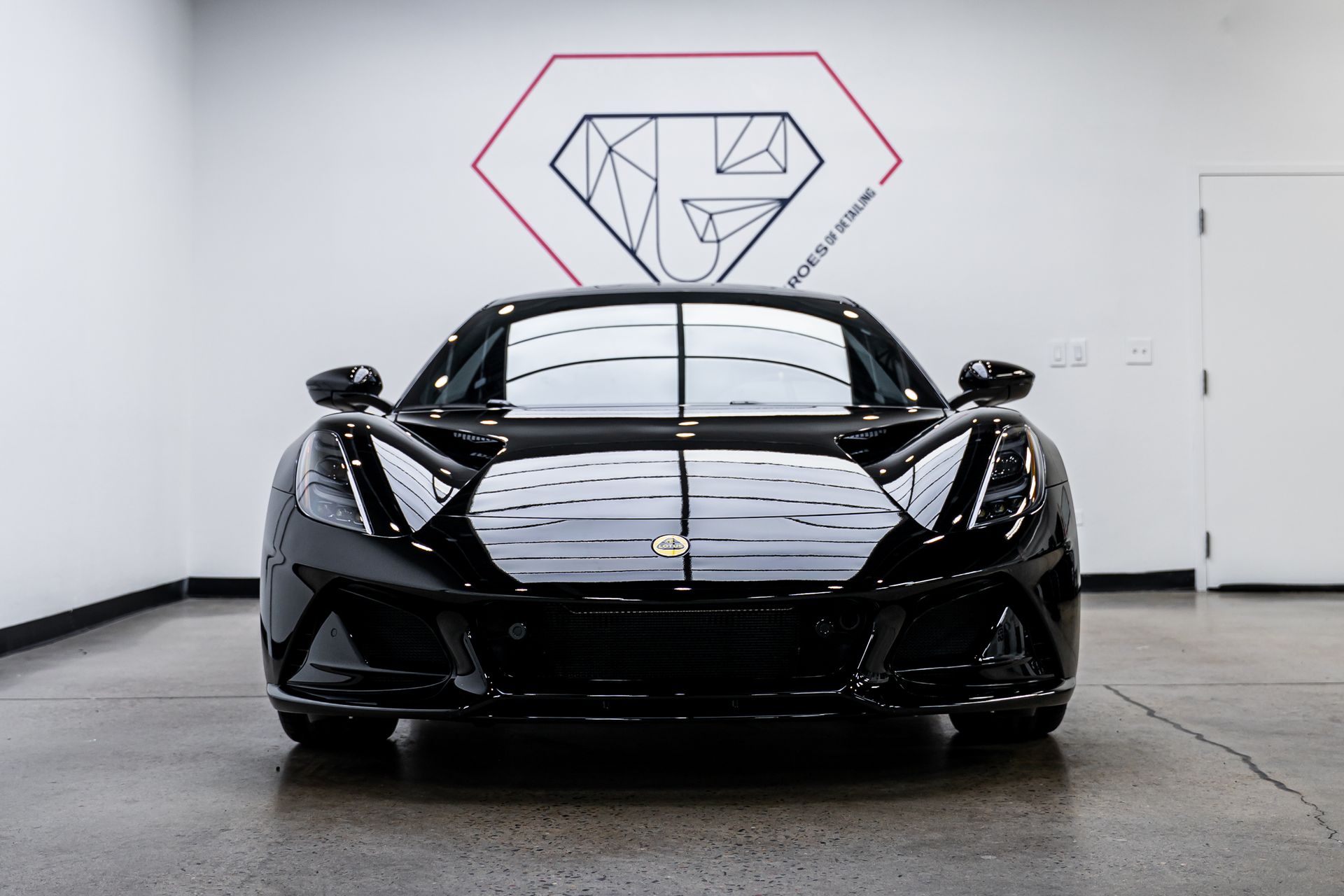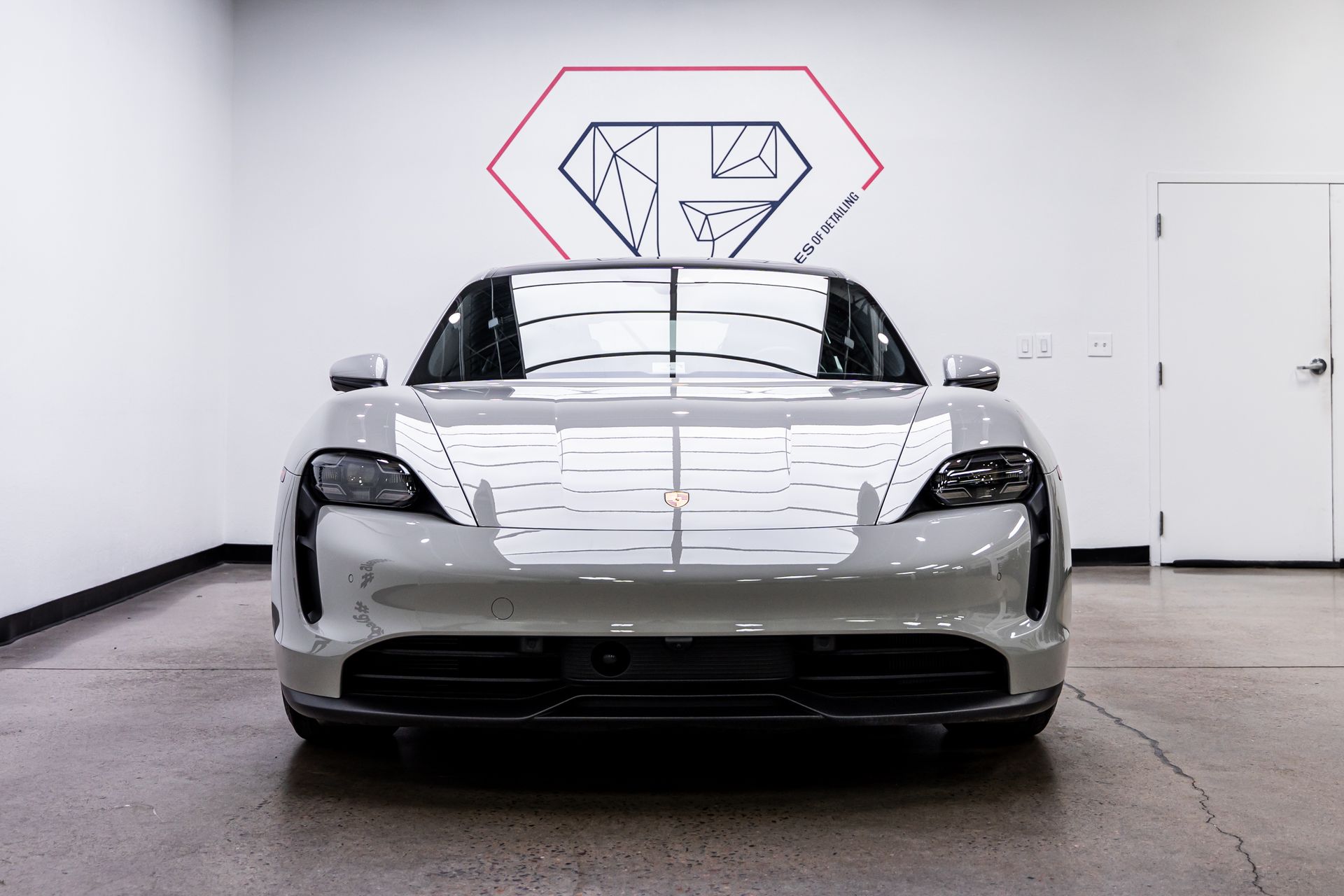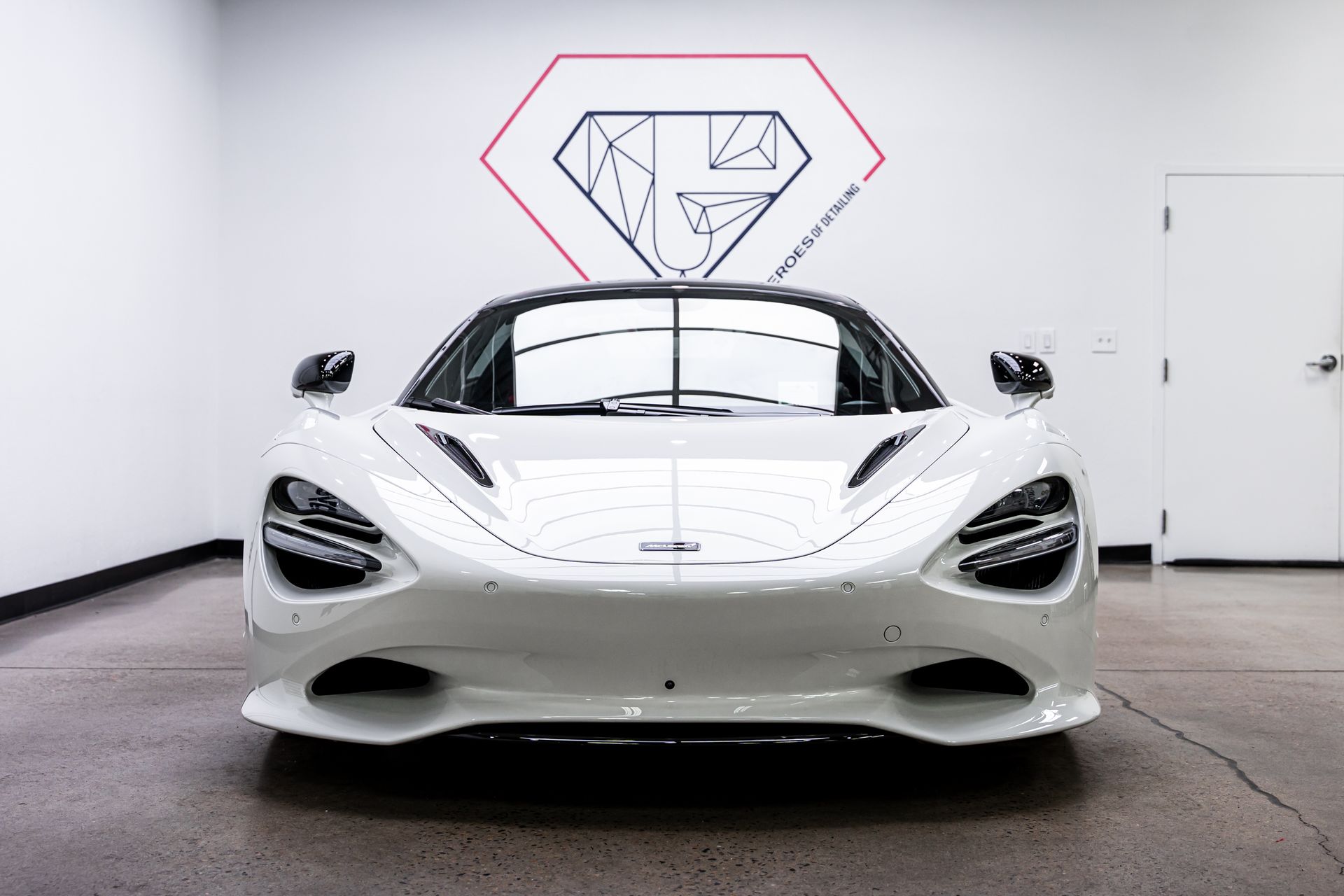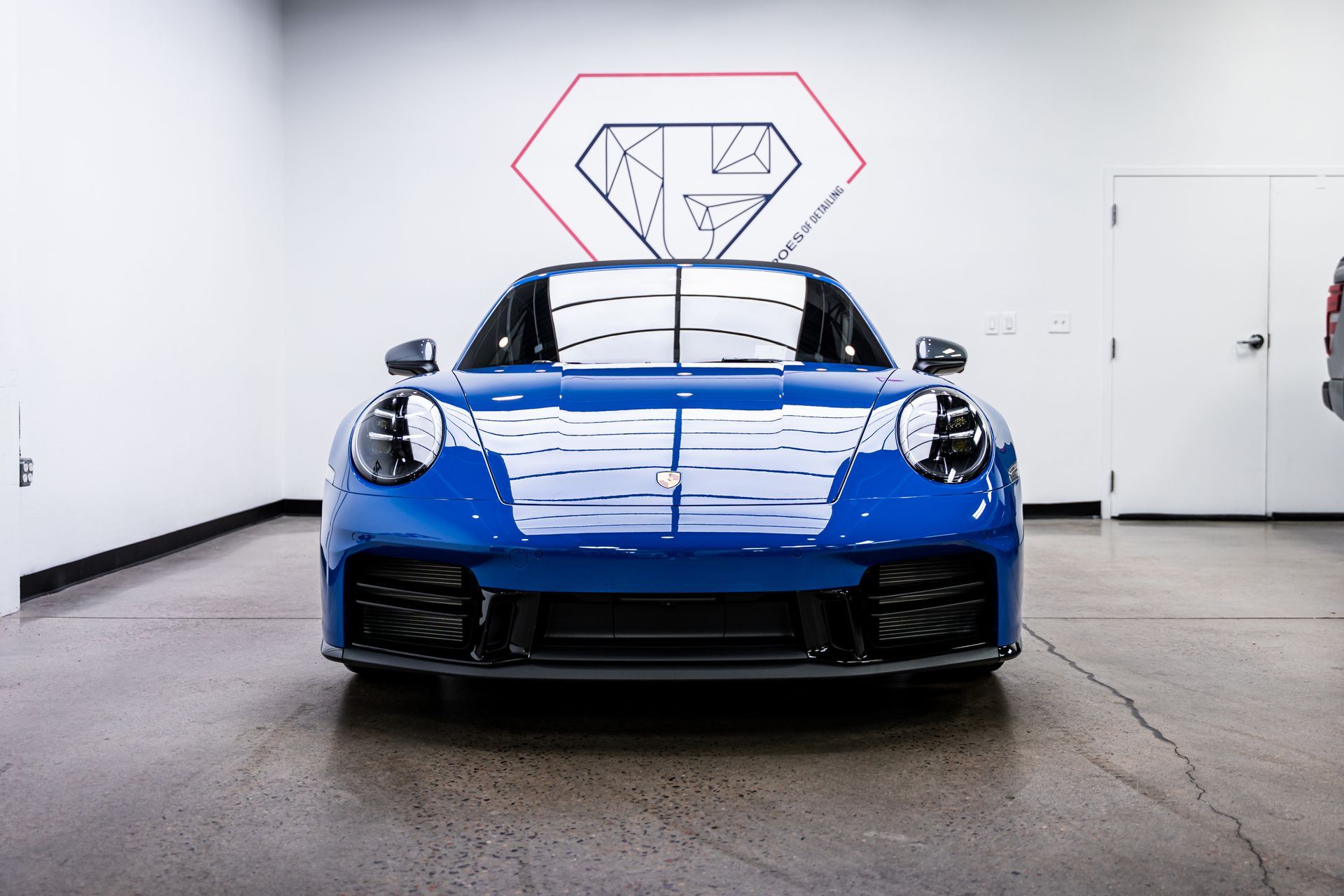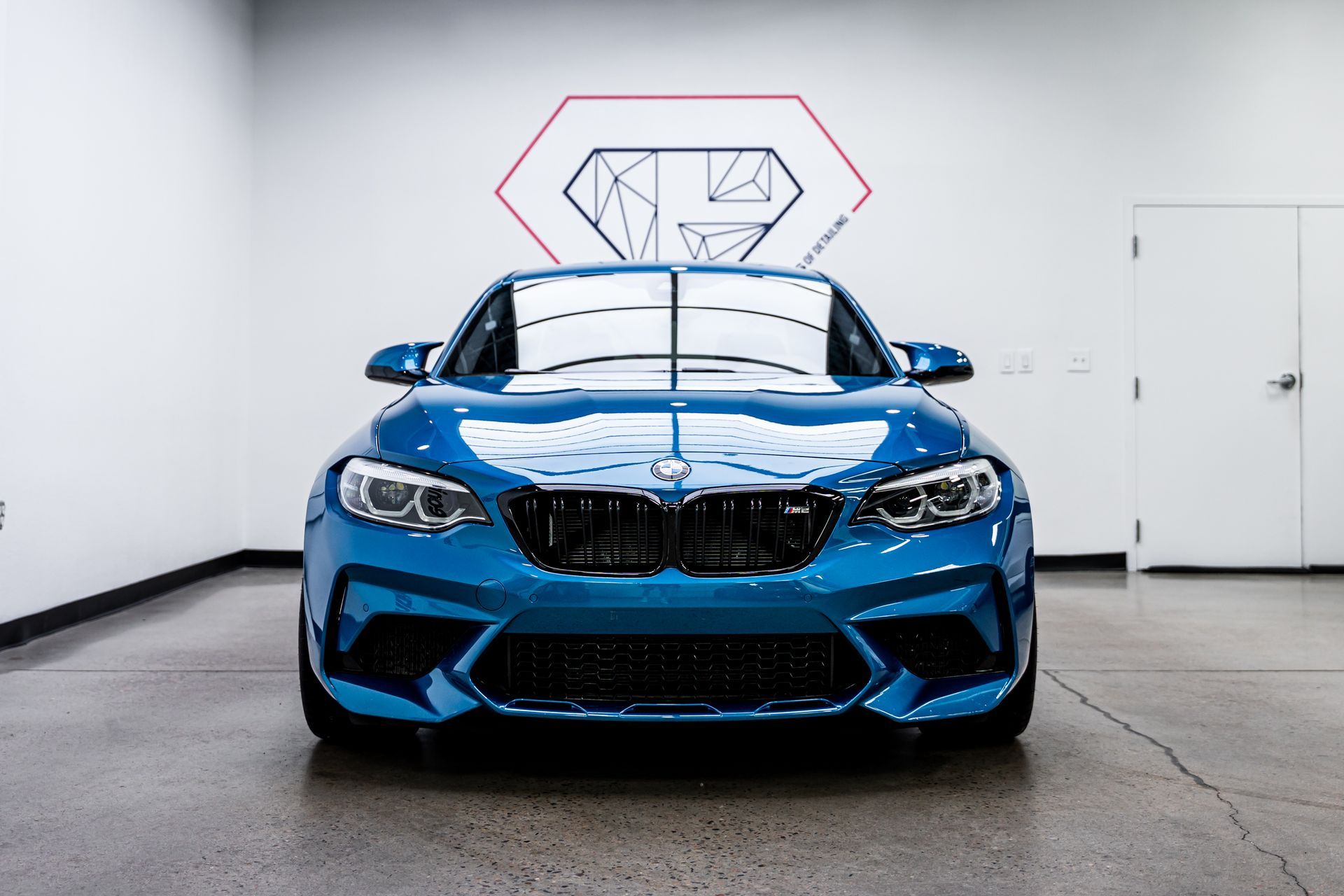Science Behind Ceramic Coating: Technology, Protection, and Benefits Explained
CALL (720) 662-8520
GET A FREE ESTIMATECeramic coatings might sound like high-tech magic, but they're actually a clever blend of chemistry and materials science designed to protect surfaces in ways wax or traditional sealants just can't match. If you've ever wondered how a thin, nearly invisible layer can shield your car's paint from fading and grime for years, this article breaks down the science behind that tough, shiny armor.
What is Ceramic Coating?
At its core, ceramic coating is a thin layer of liquid polymer that, when applied and cured on a surface, forms a semi-permanent protective shield. This shield creates a rigid, glass-like barrier that makes surfaces more resistant to damage from dirt, water, UV radiation, and everyday wear. Ceramic coatings chemically bond with the material underneath, unlike regular waxes or sealants that sit on top of the surface for a short time. This bond means they last much longer and provide superior protection for your investment. A critical component in most ceramic coatings is polydimethylsiloxane (PDMS). This polymer serves as the backbone of the formula, offering remarkable features such as optical clarity and thermal stability. Think of PDMS as invisible armor for your paint—it's resistant to many chemical attacks that would otherwise degrade the finish underneath. However, PDMS alone tends to have poor adhesion to surfaces. That's where additives like silanes come into play, creating strong covalent bonds with the treated surface to lock the coating firmly in place.
Another impressive trait of ceramic coatings lies in their hydrophobicity—their ability to repel water. Once fully cured (a process taking about five to seven days from application), the coating reorients its molecular structure so that water droplets bead up and roll off effortlessly. This water-repellent effect not only keeps surfaces cleaner by making dust and dirt less sticky, but it also helps stop damage from water, like oxidation or staining. Typical ceramic coatings achieve water contact angles between 91° and 120°, indicating strong resistance to moisture staying put on the surface. Ceramic coatings are usually just one to three microns thick but far harder than traditional protection—often reaching impressive hardness ratings. This hardness contributes to superior resistance while adding longevity unmatched by common sealants. These coatings cure through a chemical crosslinking process triggered by moisture in the air. During curing, molecules link together—forming Si-O-Si bonds—that create an interlocked network providing exceptional durability. Recent advances have focused on reducing emissions without sacrificing performance, making newer formulations more environmentally friendly.
The Science and Chemistry Behind Coatings
At the very core of ceramic coating technology is a carefully crafted chemical makeup designed not just to cover but to transform surfaces. The main ingredient here is silica, often in the form of silicon dioxide (SiO₂), which serves as the backbone of the coating's protective barrier. Alongside silica, other compounds like titanium dioxide (TiO₂) and a suite of additives enhance properties such as UV resistance and durability. What happens after you apply this mixture? It initiates a curing process driven by polymerization—a chemical reaction where tiny molecules bond into an intricate, cross-linked network. Think of it like building a web so tight and resilient that it can repel water and block contaminants from embedding themselves in your vehicle's paint.
Moisture plays an essential role here. Unlike traditional coatings that dry simply by evaporation, ceramic coatings cure through a reaction with ambient moisture. This triggers the formation of strong siloxane bonds (Si-O-Si), which chemically anchor the coating directly to the substrate. This bond isn't just physical clinging; it's a covalent bonding at the molecular level that endows the coating with incredible durability and longevity. These Si-O-Si bonds create an interconnected silica network—essentially a microscopic lattice—that conveys hardness and superior resistance. This structure pushes hardness ratings commonly up to 9H or even 10H on the pencil scale, making ceramic coatings like an invisible armor for your finish.
Silane-based additives help things stick better by creating connections between the silica network and various materials like metal, plastic, or clear coat paint. Their presence means your coating stays firmly in place even under harsh weather conditions or intense washing routines—particularly important in Denver's challenging climate with road salt and intense UV exposure. Hydrophobicity is another key science-backed feature. The cured ceramic coating surface positions methyl groups outward when it bonds, making the water contact angle greater than 100°. In simpler terms, water droplets bead up into spheres instead of spreading out flat, carrying dirt and grime away effortlessly when rinsed. This self-cleaning effect substantially reduces cleaning frequency and time—a major benefit for busy professionals who want their vehicles looking showroom-ready with minimal effort.
How Ceramic Coatings Bond to Surfaces
The effectiveness of ceramic coatings lies in their ability to form powerful chemical connections with the surfaces they protect. Unlike simple adhesives that rely on surface stickiness, ceramic coatings engage at the atomic level by creating covalent bonds—among the strongest types of bonds in chemistry because they involve atoms sharing electron pairs. The process begins with thorough surface cleaning and preparation so that reactive sites—specifically hydroxyl groups (–OH) naturally present on paint, glass, and metal—are exposed. When the ceramic coating is applied, silane additives in its formula initiate siloxane bonding. Here, silicon dioxide molecules (SiO₂) from the coating react directly with those hydroxyl groups on the substrate, forming robust Si–O–Si covalent bonds. This connection acts like molecular glue, literally locking the coating onto the surface.
Adhesion promoters within the coating increase the surface energy of both the coating and substrate, encouraging uniform wetting and more complete coverage. These additives make it easier for the liquid coating to spread evenly across microscopic hills and valleys, preventing gaps or bubbles where adhesion could weaken. As a result, once cured, the coating forms an evenly bonded layer roughly one to three microns thick—a delicate yet incredibly durable shield. This molecular bonding explains why ceramic coatings don't just sit on top but become almost part of your car's paint. The covalent link ensures resilience through rain, UV exposure, chemicals, and daily wear. Once you apply a quality ceramic coating after proper surface prep, you're chemically integrating a protective barrier that helps prevent oxidation and wards off contaminants like bird droppings or tree sap by creating a hydrophobic surface where water beads up and carries dirt away effortlessly.
Application Techniques for Ceramic Coatings
Proper application of a ceramic coating is the foundation for its long-term effectiveness. The first and most important stage is surface preparation. Dirt, oils, and even invisible contaminants can block bonding sites on the paint. The surface must be thoroughly cleansed with pH-neutral, ceramic-safe shampoos and techniques like clay bar treatments to remove embedded grime. After preparation, polishing may be necessary to correct paint imperfections. Polishing smooths the surface at a microscopic level, removing old clear coat damage that would otherwise cause the ceramic coating to reflect light unevenly or adhere poorly. Once the paint is pristine and prepped, application begins in small sections to ensure control over coverage. Using a high-quality microfiber applicator pad, an even layer is gently spread across each panel. It's critical not to overapply—too much product leads to streaking or haziness after curing.
Curing marks another pivotal moment. The chemical bonds forming between the ceramic coating and paint need time—often 24 to 48 hours undisturbed—to solidify fully. During this window, the vehicle should not be washed or exposed to rain and dirt. Following manufacturer guidelines for temperature and humidity precisely will enhance longevity. Finally, after curing, lightly buffing with a clean microfiber cloth removes lingering residue, unlocking the signature glossy finish ceramic coatings are known for. Working indoors or out of direct sunlight is essential, as heat accelerates drying and complicates even application. Investing time in aftercare—regular washing with ceramic-safe products—prolongs durability significantly.
Key Benefits: Durability and Protection
Ceramic coatings stand out primarily because of their remarkable durability. Unlike traditional waxes or sealants that break down within months, a well-applied ceramic coating bonds chemically with the car's clear coat, creating a durable, continuous shield that lasts for years. Professional-grade products with high SiO₂ concentrations can maintain their protective qualities for five years or more with proper upkeep. This longevity reduces maintenance frequency and effort, saving time and money—a valuable benefit for professionals with demanding schedules. The extended durability means they endure harsh conditions that would typically degrade untreated paint quickly. UV rays from the sun can fade colors over time; however, this coating reflects harmful ultraviolet radiation. The coating maintains a smooth, polished appearance that preserves the value of your premium vehicle.
Beyond durability, ceramic coatings provide comprehensive protection against environmental hazards. The protective barrier repels contaminants such as bird droppings, tree sap, acid rain, and road salts—all notorious for compromising paint integrity. Thanks to the hydrophobic nature of ceramic coatings, these harmful elements cannot easily settle or bond onto the painted surface. This attribute makes cleaning easier and less frequent while drastically lowering staining risks. This preservation of the base coat extends your vehicle's aesthetic appeal significantly and keeps resale values higher. Investing in a quality ceramic coating means wrapping your vehicle in technology designed for peak performance over several years, providing both superior durability and comprehensive protection against corrosive agents encountered daily in challenging climates.
Hydrophobic Properties and UV Resistance
Ceramic coatings owe their water-repelling power to unique molecular orientation. The polymer chains organize so that their methyl groups face outward, creating a surface that water can't cling to. This results in impressive water contact angles—typically 91° to 120°—which means droplets bead up and roll away with ease. This hydrophobic effect dramatically reduces water spots and actively prevents grime, dirt, bugs, and bird droppings from embedding deeply into surfaces. Contaminants wash off with minimal effort during rinses—a significant time saver and protective barrier against harsh cleaning chemicals. This benefit is particularly valuable where road salt in winter and intense sun in summer create constant maintenance challenges.
Ceramic coatings also serve as vital shields against UV radiation. The coatings absorb and block a significant amount of UV rays, substantially slowing oxidation and color fading. This means your paint preserves its vibrancy far longer under sun exposure—especially important in high-altitude environments with intense sunlight. UV damage causes chemical bonds in pigments and clear coats to break down over time, manifesting as dullness and chalky textures. Ceramic coatings form a microscopic barrier shielding your surface from these damaging rays while limiting heat buildup. This dual action helps maintain both appearance and structural integrity, protecting your vehicle investment for years. The hydrophobic and UV-resistant nature together makes ceramic coatings more than just a cosmetic upgrade—they transform surfaces into resilient barriers. For vehicle owners, this means reduced maintenance costs, longer-lasting finishes, and preserved value over time.
Ceramic Coating Experts in Parker, CO
Colorado roads and weather can take a toll on your car’s paint, but Denver Auto Shield has you covered. Our Parker-based
ceramic coating services deliver durable, high-gloss protection that keeps your vehicle looking stunning and easy to clean. With advanced hydrophobic technology and expert application, your paint stays shielded from the elements while maintaining that sleek, mirror-like finish. Give your car the long-lasting defense it deserves—schedule your ceramic coating service now!

